
Jinma Village and The Relic of The Ancient Tea Horse Road in Fengqing, Lincang
Jinma Village and Relic of The Ancient Tea Horse Road(鲁史镇金马村茶马古道) is located in Lushi Town in Fengqing, Lincang.
The ancient post road from Shunning(顺宁) to Xiaguan (下关) was opened in the fifth year of the Yuan Dynasty Emperor Chengzong’s reign (1302/元成宗大德五年), nearly 700 years ago. In 1954, with the opening of the Xianglin (Xiangyun to Lincang/祥临) Highway, the “Shunxia Line” of the Ancient Tea Horse Road gradually became less frequented. Especially in the early 1970s, with the opening of the road from Fengqing(凤庆) to Lushi(鲁史), the section of the “Shunxia Line(顺下线)” from Fengqing to Lushi’s Rhino Crossing(Xiniudu/犀牛渡) became even quieter, gradually fading from people’s sight.
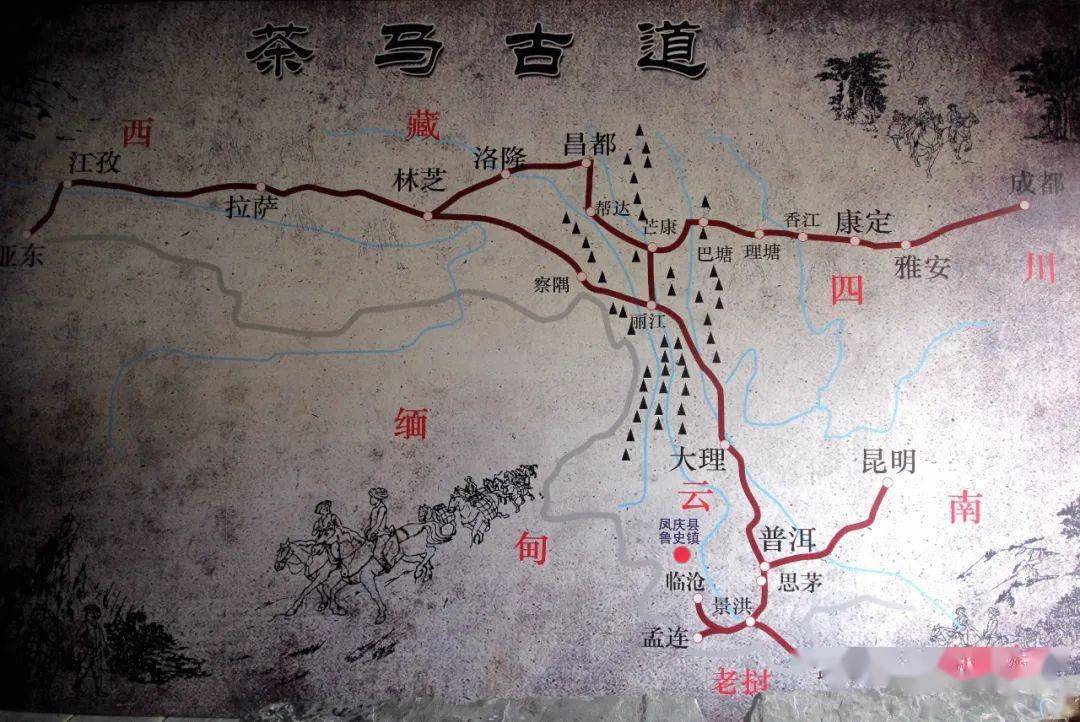
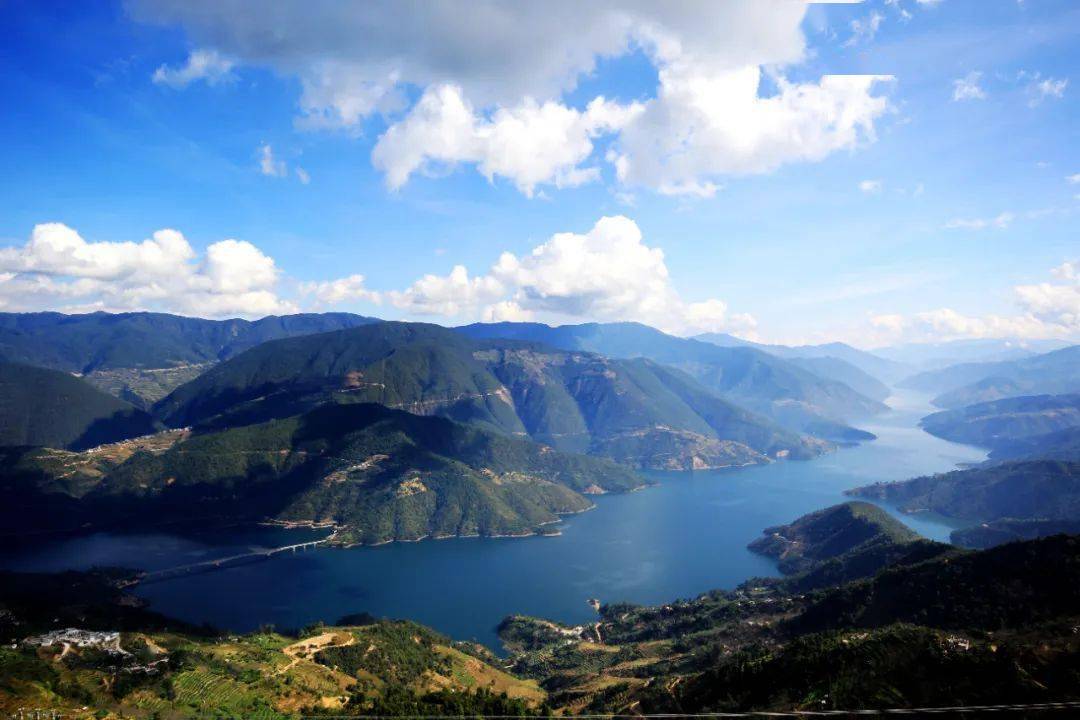
01 Xincun Street(新村街), where only stories remain.
In the lunar calendar on the fourteenth day of the eighth month in 1639, Xu Xiake (徐霞客) lodged at the Mei family’s home in Gaojiancao(高枧槽), and the next day crossed the Lancang River from a place called Biandu(扁渡) and arrived at Lushi. After the completion of the Qinglong Bridge in 1761, the direction of the “Shunxia Line(顺下线)” of the Ancient Tea Horse Road also shifted for crossing the river. Instead of crossing the river by bamboo raft at Biandu, it changed to cross over the Qinglong Bridge in the direction of Xincun Street(新村街). As an important stop before crossing the river, Xincun Street naturally formed a bustling market. The caravans entering the city passed through Heishan Gate(黑山门), Qinglong Bridge(青龙桥), and Jiufang (酒坊), and Xincun Street was the only place for food and accommodation; similarly, the caravans leaving the city could only eat and stay here.
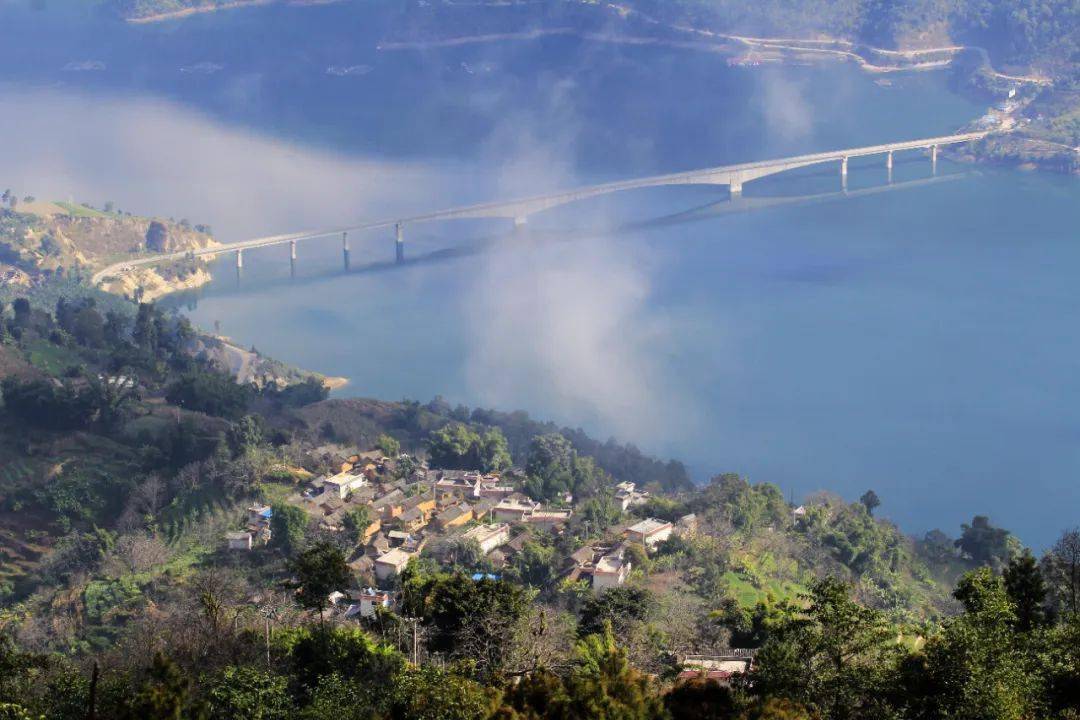
In 1984, when I started working, although the roads were already built, they were in such poor condition that there were no vehicles available for transportation. I had to carry my luggage and set off from my hometown, Shili(诗礼). On the first night, I stayed at the guesthouse of the Supply and Marketing Cooperative in Xincun Street(新村街供销合作社). I had a meal of rough rice for 25 cents, accompanied by a bowl of onion soup, and then settled in under the dim electric lights. In just thirty years, Xincun Street has undergone significant changes. The location of the Blacksmith Shop(Tiejiangpu/铁匠铺) is now occupied by two walnut trees, and wild grasses grow around the Water Mill(Shuimofang/水磨坊). A three-story Western-style building now stands where the guesthouse used to be, serving as a landmark of Xincun Street. Only two small shops are still in business on the street, one selling agricultural supplies and the other selling general merchandise. The new Western-style houses along the street all have spacious storefronts, but most of them are vacant. I was surprised to find that the old horse inn in Xincun Street was still there, seemingly hiding because a three-story reinforced concrete building had been erected in front of it.
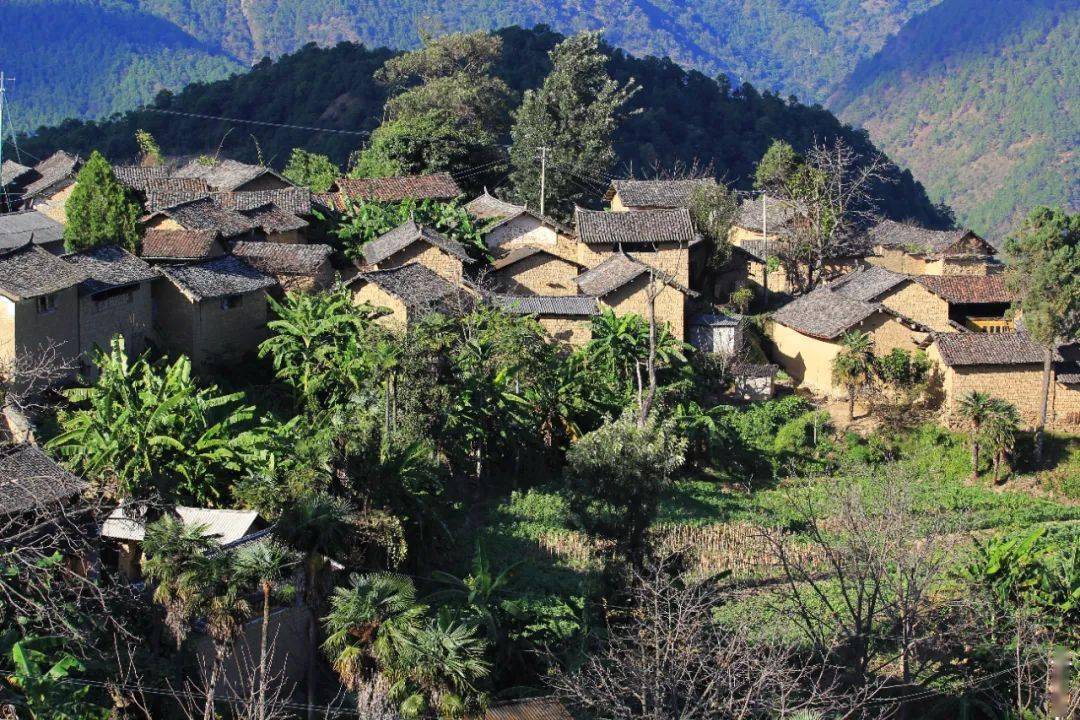
Traditional Houses in Xinjiecun Village
I lightly knocked on the slightly ajar door of the old horse inn, but there was no response. A middle-aged woman who was guarding the shop nearby came over and said I could go in; it was her niece’s house. The lattice window, covered with newspapers, and the old walls adorned with posters remained unchanged. The only difference was that the water was no longer drawn from the wooden well trough; instead, there were a few small fish in the stone water tank below the faucet. The large stove had been dismantled, and the rice cooking in the electric rice cooker emitted a fragrant aroma. Upstairs was where guests used to stay, but now it was piled with newly harvested grains. Hanging on the smoke-stained old wall were strings of bright red peppers.
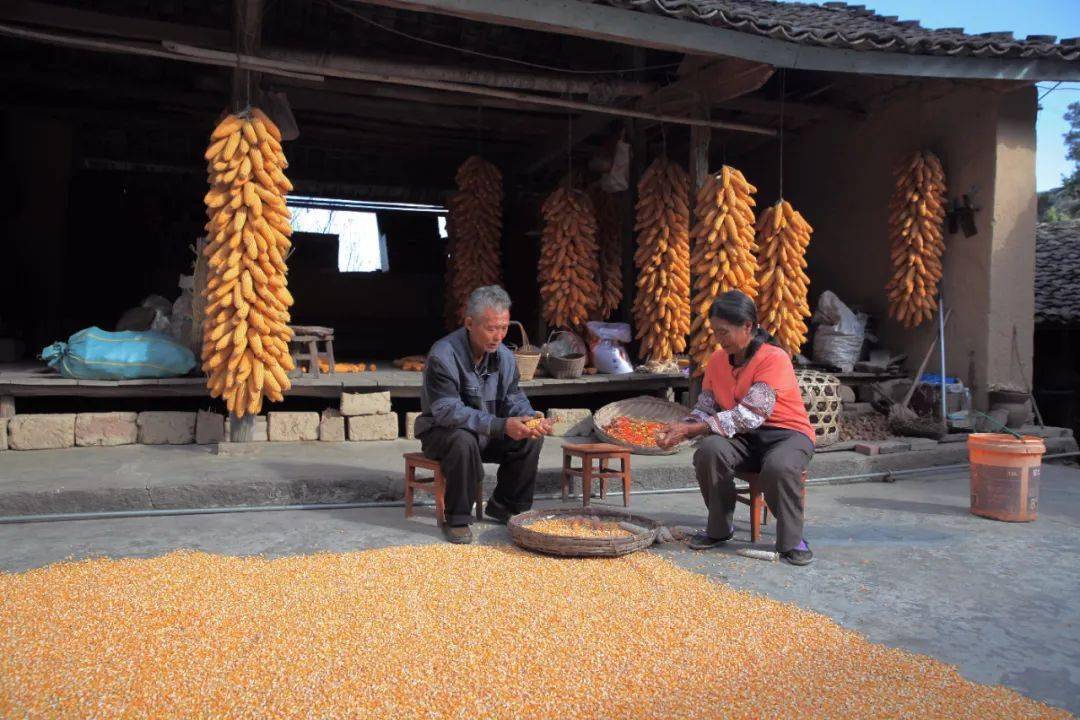
The elderly residents who stayed behind in Xincun Street
Li Zhenmin, who served as the accountant for the production brigade for half of his life, told me that Xincun Street has three small groups, which were formerly known as production cooperatives. Out of the 120 households of farmers, now only fewer than 30 remain. Due to the construction of the power station and relocation, this ancient relay station now mostly consists of empty houses. His family belongs to one of Jiezi Shangdui Village (街子上队) and was not included in the relocation plan, so they can still stay in their old house. Li Zhenmin remembers that before 1972, Xincun Street was bustling with activity, but after 1972, with the opening of Daheshi Street, Xincun Street was no longer bustling. People all flocked to Daheshi Street(大河街) because it was much more convenient for transportation. Up to now, although there is a road connecting Xincun Street to the county town, it is very narrow, unable to accommodate two cars passing each other, let alone withstand heavy rain. Therefore, people here still face considerable difficulties in traveling. However, it is this road that traces the remnants of the ancient Tea Horse Road, which makes me both nostalgic and melancholic about Xincun Street.
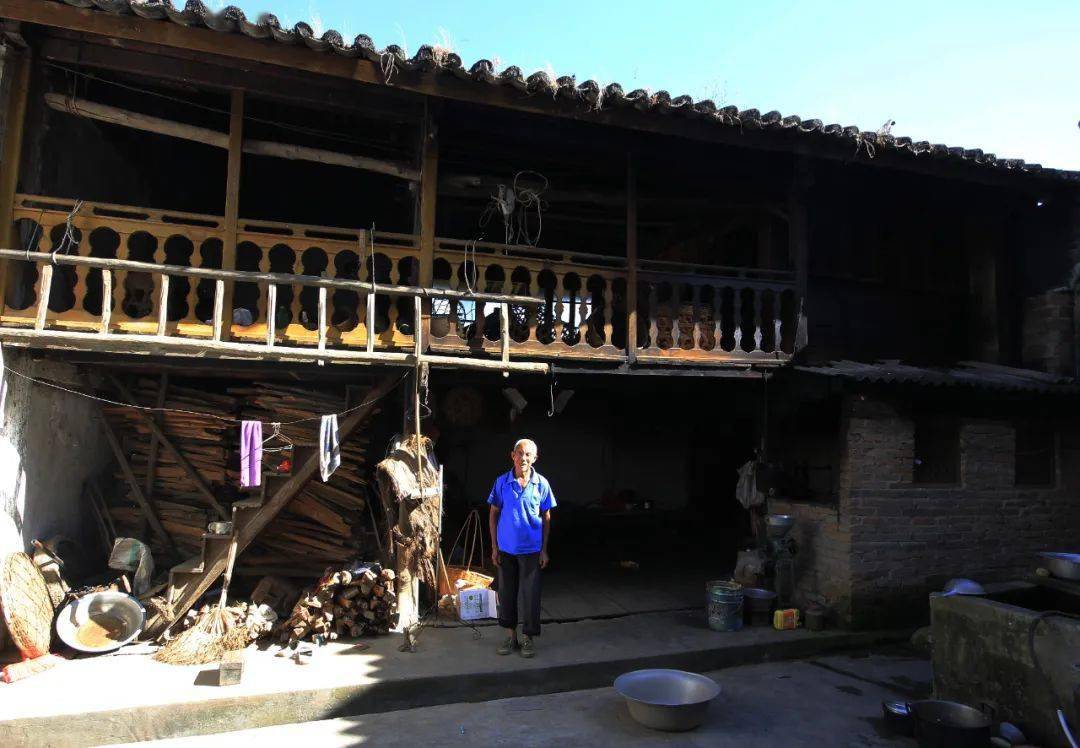
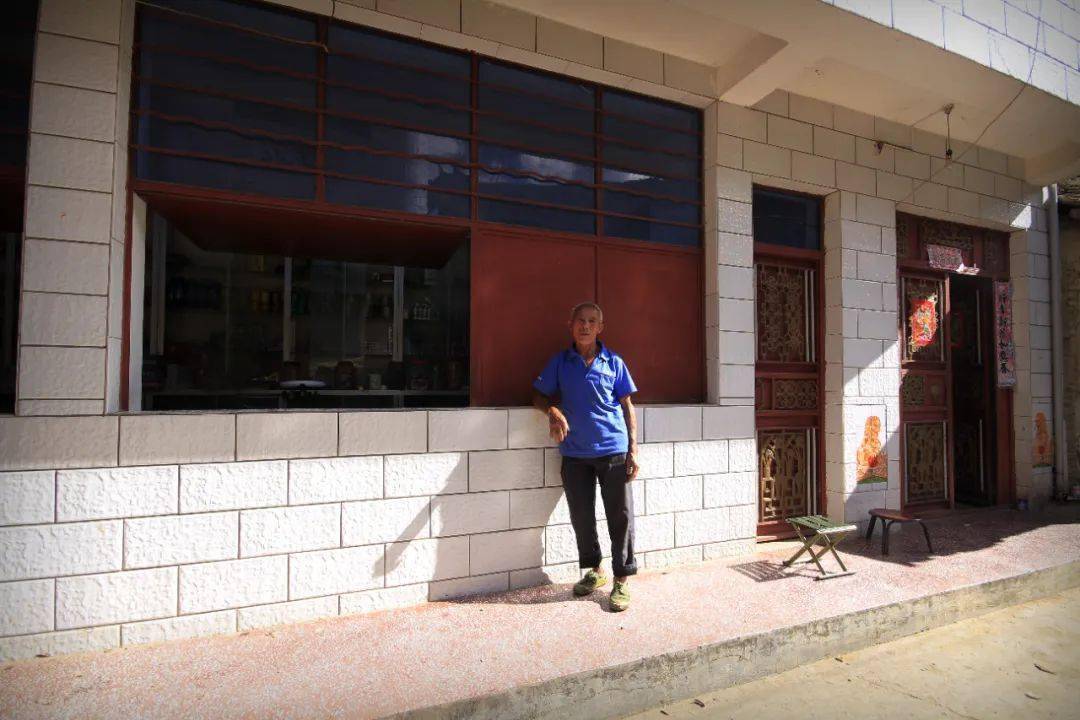
The storefront of the old supply and marketing cooperative in Xincun Street (新村街老供销社) on the Ancient Tea Horse Road
Mr. Fan, born in 1926, is the oldest person I interviewed. He provided reliable insights into the rise and fall of the Ancient Tea Horse Road. While he often reminisced about the changes brought by the caravans to Xincun Street in the past, he was deeply touched by how the once bustling street became deserted in later years.
Even before liberation, Xincun Street was already lively, with specialized shops selling food and daily necessities. During the collective era, apart from the lodging and sales shops opened by the supply and marketing cooperative of Dasi Township, private accommodations were also available in Xincun Street. When it comes to the caravans, Mr. Fan seemed somewhat excited, as it was a nostalgic topic for him after so many years. In fact, people near the relay stations enjoyed interacting with the caravans. It was an opportunity to sell grains and fodder and to purchase scarce goods like fabrics.

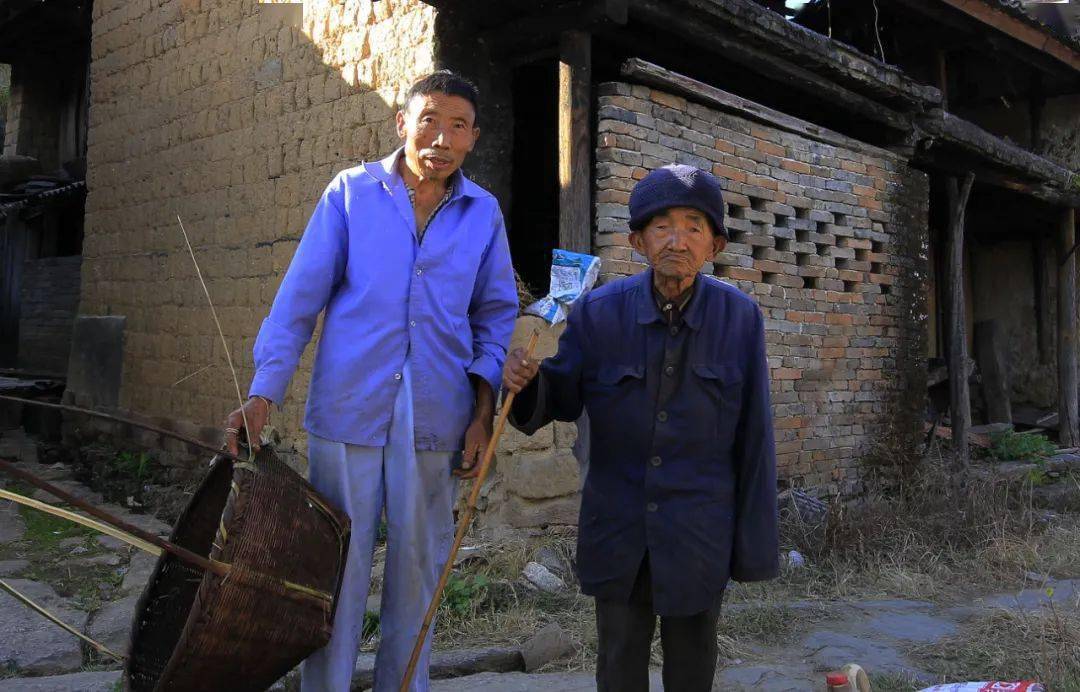
The elderly residents of Xincun Street on the Ancient Tea Horse Road
The tea customs brought by the Ancient Tea Horse Road to Xincun still endure today. For instance, when an elder brews tea for me, they always pass the teapot down from a higher position, and I receive it with both hands as a sign of respect. I asked if they also brew tea this way in their daily lives, and the elder mentioned that tea canisters are rarely used now, but the tradition of inviting guests for tea remains common. A more convenient method is to brew a pot and pour it out for drinking.
02 “Jinma Village(金马村): The Ancient Road Isn’t Lonely”
Jinma Village(金马村) is located in Lushi Town, Fengqing County(凤庆县鲁史镇), situated to the south of the town government office, approximately 24 kilometers away. While the road leading to the town is paved, making transportation convenient, it hasn’t changed the fact that Jinma remains somewhat isolated, as the road ends here. Jinma(金马村) is an important relay station along the Ancient Tea Horse Road, with distances of over 30 kilometers to both Lushi and Xin Cun Jie. It serves as a crucial stopover for caravans, hence the saying “no village ahead and no inn behind,” precisely describing Jinma’s strategic location. Therefore, whether it’s caravans heading north or travelers coming from the south, they all must choose to stay overnight in Jinma.

金马街一角/Street of Jinma Street
Time has aged, flowers have withered, and when I visited, I encountered a little cat playing with the weeds. Without butterflies, the little cat must have had endless yearnings, thus engaging in anthropomorphic games with a tuft of grass. Along the Ancient Tea Horse Road, besides being engulfed by declining vegetation, there were also mountain torrents devouring it. Similar to Xin Cun Jie, the Ancient Tea Horse Road here has vanished without a trace.

Ancient Countyard in Lushi Old Town
When I picked up the thread of the Ancient Tea Horse Road again, I couldn’t help but wonder if this was the path once traveled by Yunnan red tea, along with delicate silk and rough cloth tributes. Fortunately, there are still some people who remain steadfast, which prevents Jinma from appearing too desolate. The lifestyle brought by the caravans is gone, yet they haven’t lingered in the same spot. The elderly stay behind to tend the fields, while the younger generation goes out to work for wages. The guesthouse and trading post in the Jinma Ji community(金马基社) were sold to Old Mr Li for a one-time payment of 28,000 yuan. Luckily, Old Mr Li(老李) didn’t demolish these old houses for reconstruction.
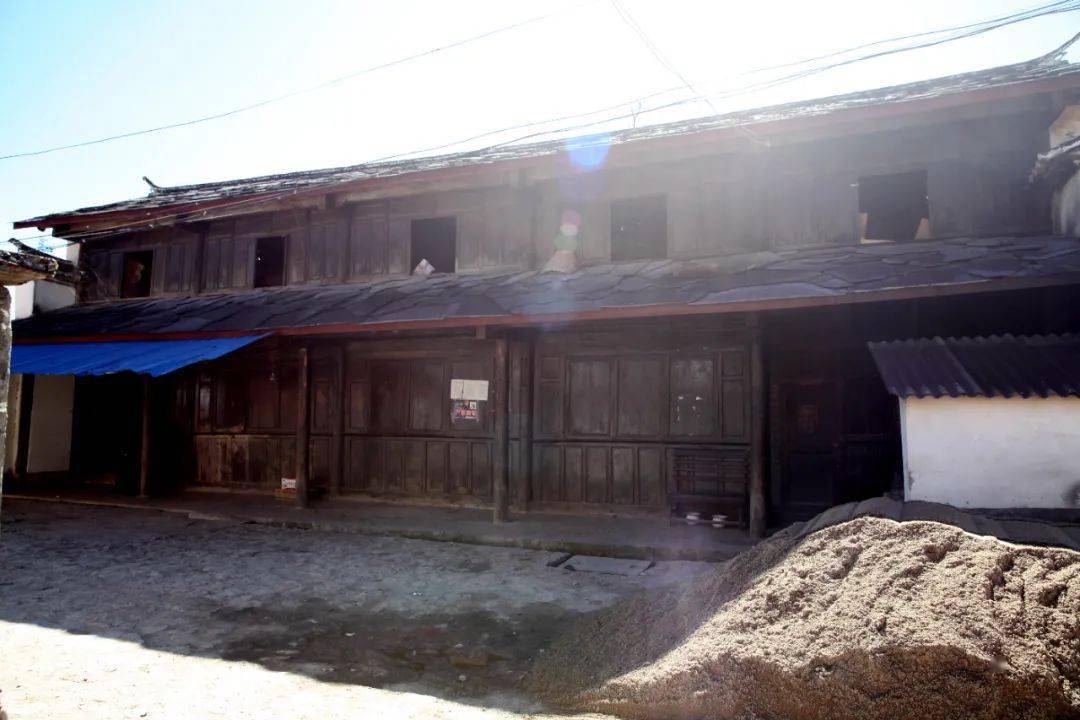
金马街的老旅社/The old inn in Jinma Street
Walking up the creaky wooden stairs, I was greeted by some revolutionary slogans on the old wall. Inside the inn, there were still the wooden beds from yesteryears, with three beds in one room. The standard room back then looked just like this, with mosquito nets hanging down, stirring up dust with the slightest touch, and the brown blankets still intact, although worn out like copper wires. On the shelves of the sales store, the unsold Kagib cloth from years past was still there. Two oil lamps hung in the corner, covered in dust, and the abacus beads, now dull, still gleamed with an oily sheen. Old Li (老李) led me around, already an eighty-five-year-old man, lamenting how all the children had gone to work and he couldn’t afford to renovate the old house. Ironically, I felt a sense of joy knowing that because it hadn’t been renovated, I could glimpse the old times of the inn where I once stayed.
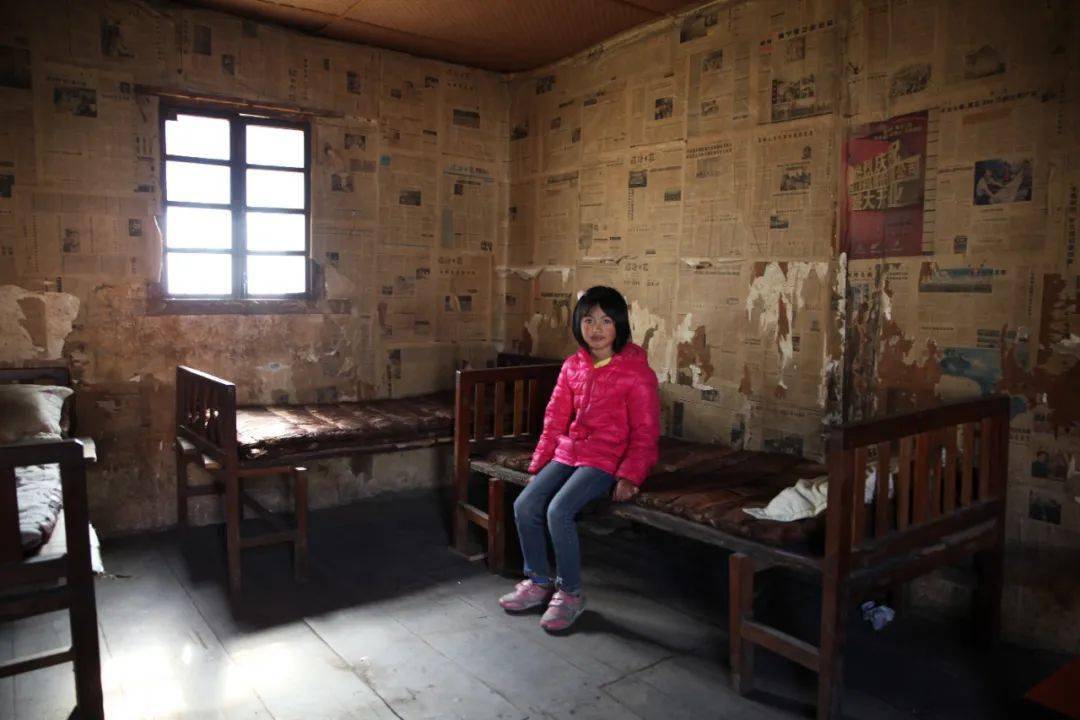
金马街的老旅社/The old inn in Jinma Street
Many households have hosted caravans, as the lodging capacity of the cooperative’s inn was limited. Thus, from one end of the street to the other, there are traces of the Resting Horse Manor, even though these stables have been repurposed. Sometimes, the Tea Horse Ancient Road can be sensed purely through its aroma. And for Old Li, who was able to purchase the cooperative’s inn(供销社旅店) for over twenty thousand yuan, his personal experience represents the intersection of generations of Jinma people(金马人) with the Tea Horse Ancient Road.
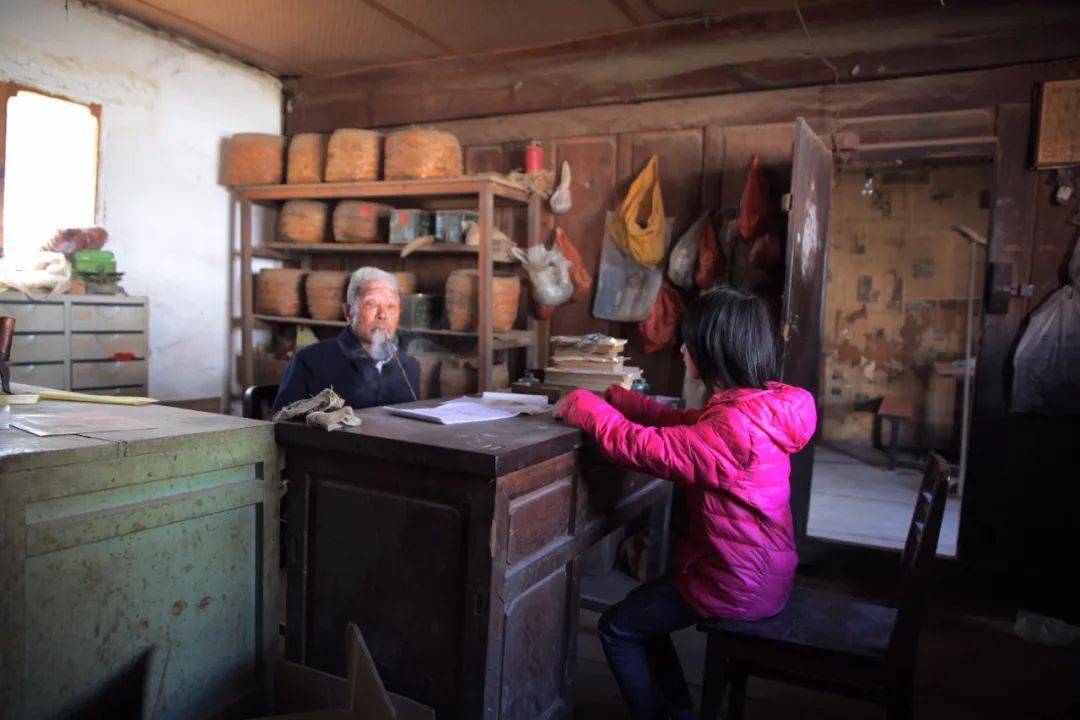
金马街上的老卫生室/The old health clinic on Jinma Street
The ancient Tea-Horse Road from Fengqing to Xiaguan passes through villages, where caravans would stay overnight in Yin Family(殷氏人家). Every day, caravans passing through the village would create a magnificent sight, drawing villagers to stop and watch, including the young Li from his childhood. His daily tasks involved carrying a dustpan to collect horse dung, helping his mother cut grass on the mountain, and fetching water from a distant well for the horse shop. Whenever they heard the bells of the caravans, the children in the village would gather to watch the spectacle, their eyes following the caravans as they approached the village and then bidding them farewell as they disappeared into the distant mountain roads. However, with the advent of roads, the once glorious era of Jinma has been pushed aside.
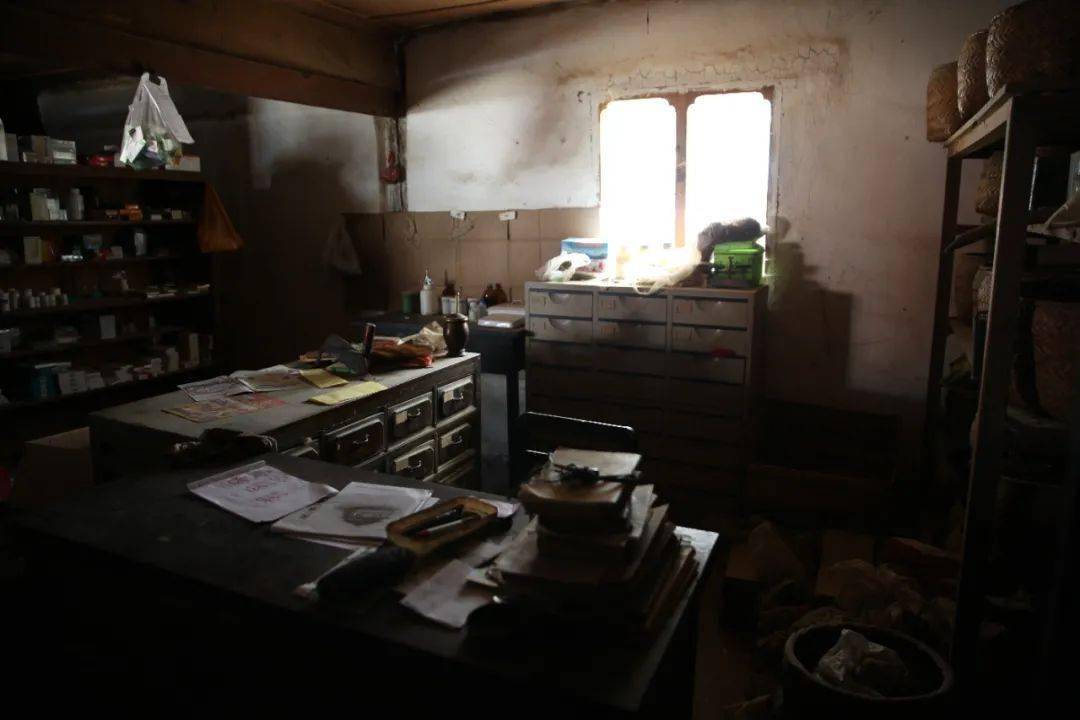
金马街上的老卫生室/The old health clinic on Jinma Street
In this era of entertainment for all, Jinma(金马村) is no exception when it comes to singing and dancing. Ji Bingkang(纪丙康), one of the leaders of the village committee and also in charge of the Jinma Cultural Propaganda Team(金马文艺宣传队), told me during the interview that they were rehearsing a program promoting the ideology of the 19th National Congress(十九大思想) and planning to tour neighboring villages to perform. As I glanced through their program list, I noticed that a significant portion of it focused on the content related to the ancient Tea-Horse Road. As times progress, while the Tea-Horse Road has become history, there’s no need to dwell on the past. Instead, it’s time to take action and steadily advance on the path to poverty alleviation and prosperity.
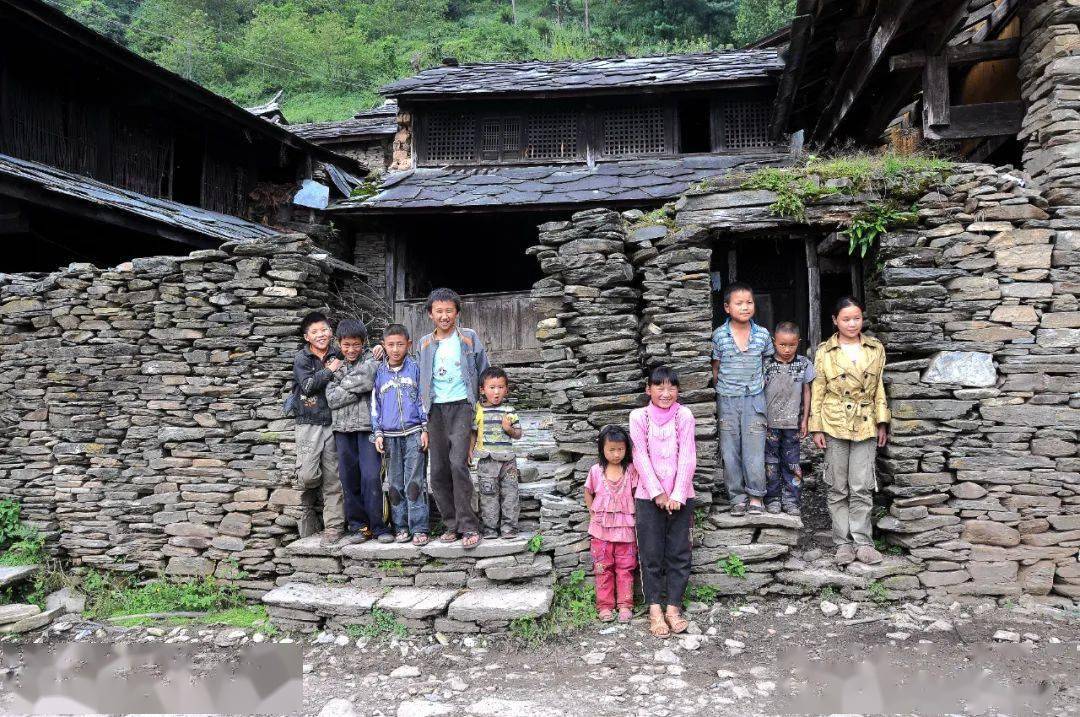
03 Tangfang Village(塘房村): Ancient Tea-Horse Road Well Preserved
Tangfang Village(塘房村) may not be considered a formal relay station, but it serves as a significant resting point along the ancient Tea-Horse Road. Situated along the route, Tangfang Village has been deeply influenced by the presence of the Tea-Horse Road, which is integral to the village’s livelihood.
With 26 households in the village, many have provided services to the caravans passing through. While the caravans may not have stayed overnight in the village, they often stopped here to rest their horses and take a break before continuing their journey along the road.
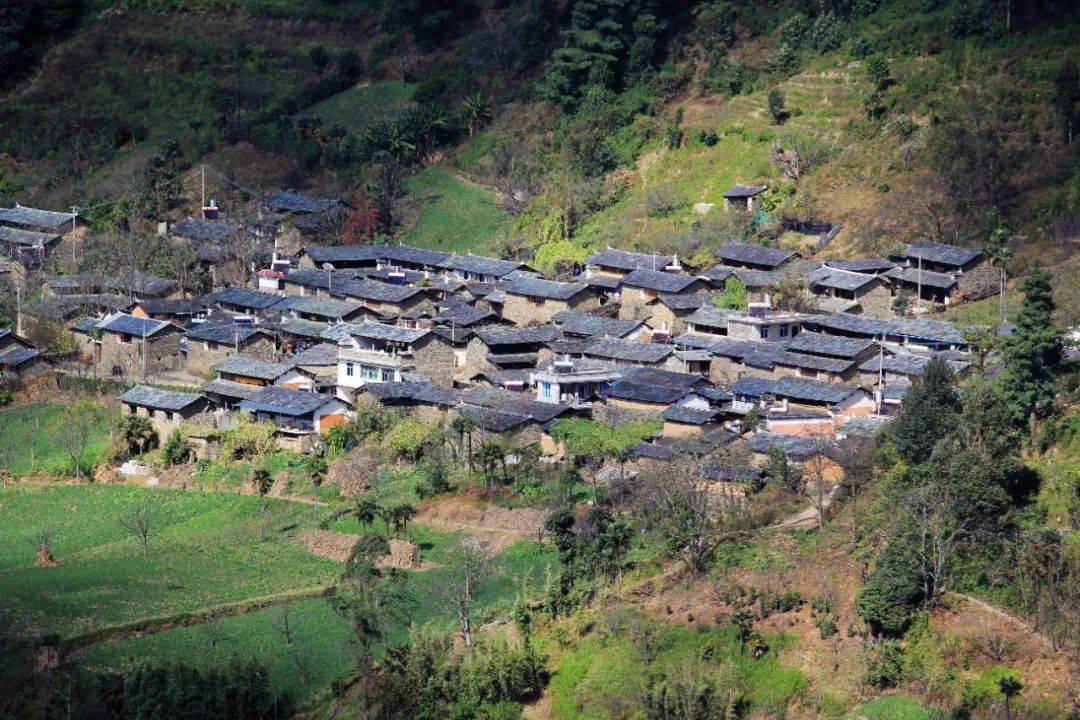
Tangfang Village offers picturesque views from afar
From Fengqing to Xiniu Ferry(犀牛渡口), the only place where you can still see rusty horseshoes, heavily worn hitching posts, and unused pack saddles is Tangfang. Although the caravans only pass through, the savvy people of Tangfang always find business opportunities with them. Apart from selling fodder and providing tea services, they also organize local products to sell to the caravans, exchanging for necessities. In fact, these local products greatly help the people of Tangfang. When the caravans arrive, items like chicken mushrooms, wood ear fungus, tree blossoms, and medicinal herbs are in season. The caravan leaders, equally shrewd, often add these items to their pack saddles to earn extra income without reporting to their bosses. Even now, from Jingmenkou to Tangfang, about 4 kilometers of the ancient Tea-Horse Road remains well-preserved. As it was laid with stones, even wild grasses cannot erase the traces along this route. Instead, with time, the road exhibits more of its ancient glory.
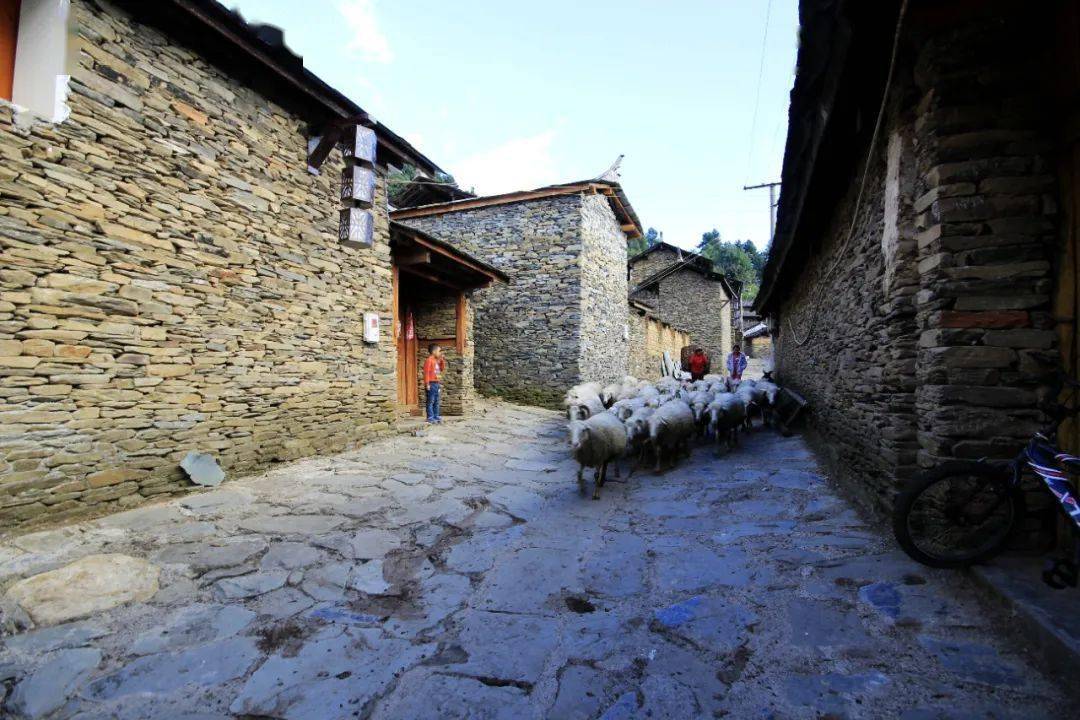
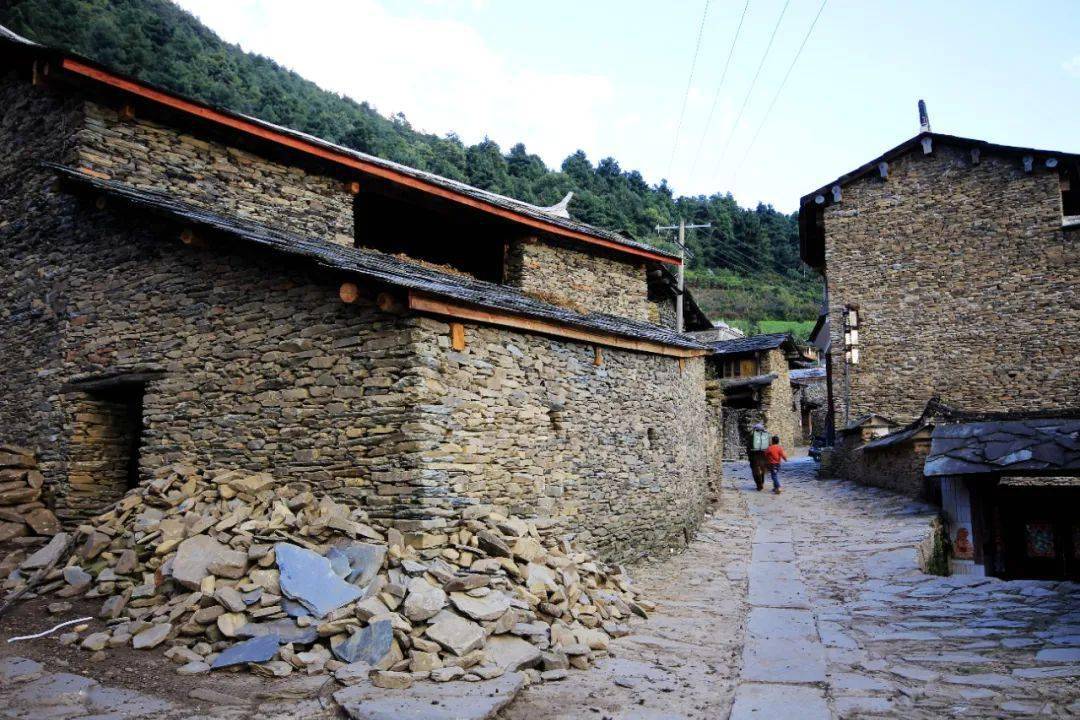
茶马古道上的塘房村/Tangfang Village on the Ancient Tea-Horse Road
Stone is everything to the people of Tangfang. Stone houses are built with stone strips or blocks for walls, which can reach heights of 5 to 6 meters; stone slabs are used for roofing, impervious to wind and rain. Except for timber beams and rafters, everything else is made of stone. Although simple and plain, these houses are as sturdy as a fortress. These houses provide warmth in winter, coolness in summer, and are resistant to moisture and fire. Many men in Tangfang have the skill to stack small, irregular stones into straight walls. Larger stones are used for flooring, assembling water tanks, and crafting feed troughs for livestock. Stone tables, benches, basins, and grinding mills reflect the primitive and rustic indigenous cultural characteristics.
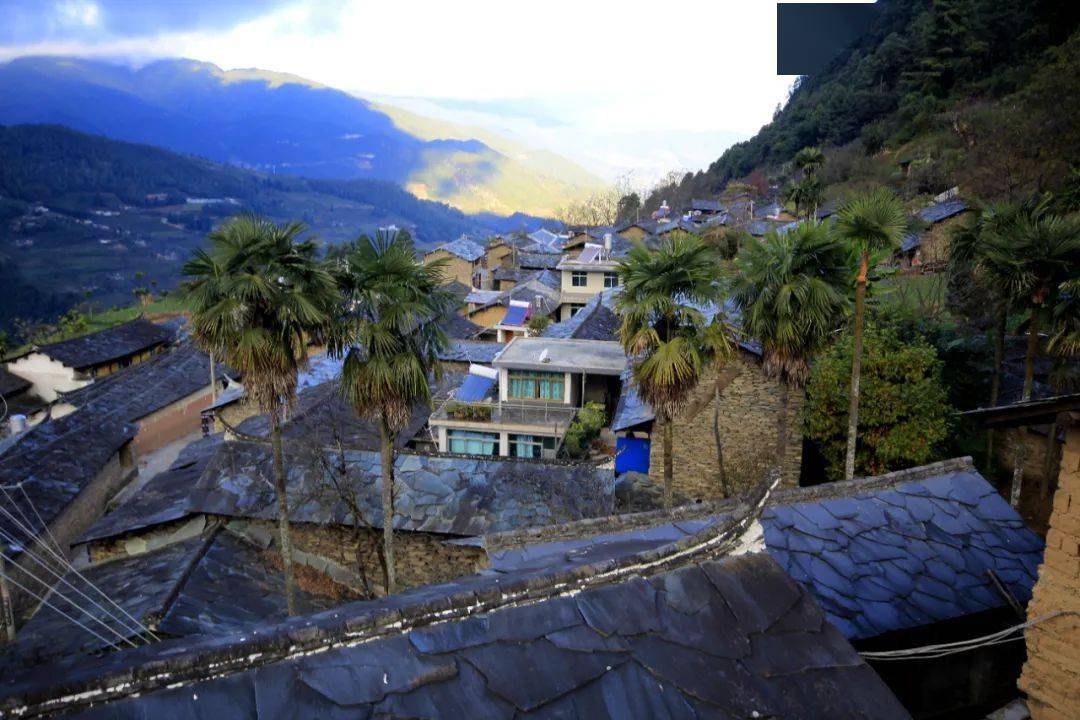
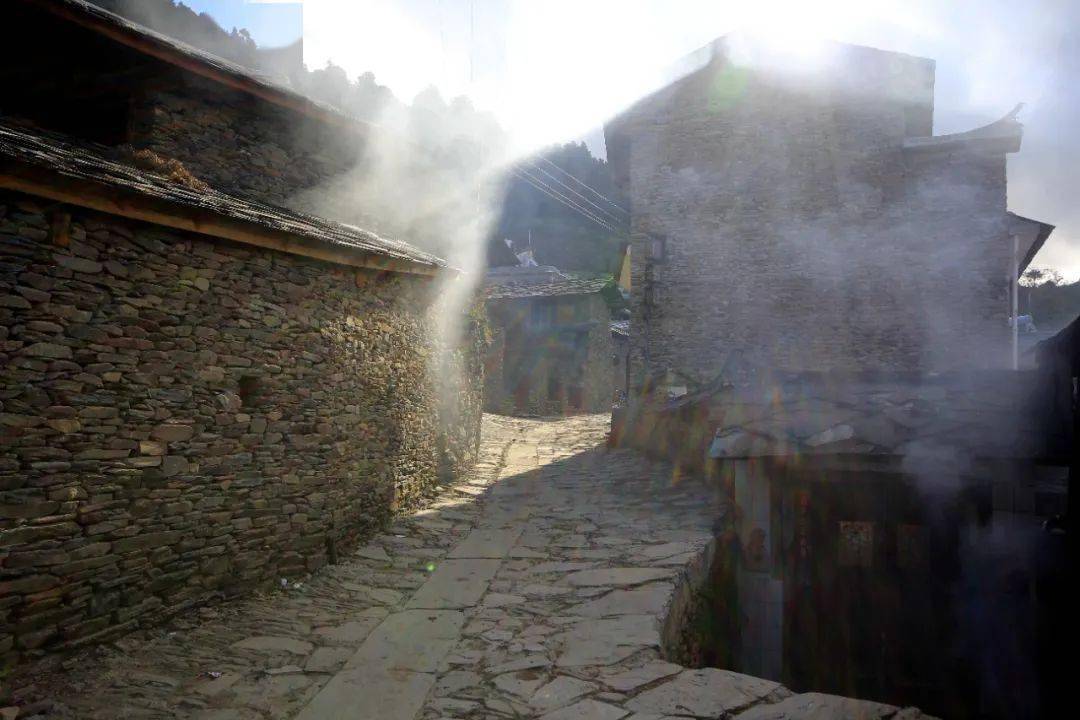
茶马古道上的塘房村/Tangfang Village on the Ancient Tea-Horse Road
Nowadays, tea has become the primary cash crop in Tangfang Village, and this can be attributed to the long historical influence of the Tea Horse Ancient Road. It is said that a merchant from Dali, in gratitude to a family in Tangfang, promised to buy tea from them at a high price regardless of the quantity they produced. Additionally, a caravan leader from Shunning, aiming to provide a means for the impoverished villagers of Tangfang, would bring tea seeds to the village whenever passing through, giving them hope for the future. Today, those tea seeds have grown into ancient tea gardens, enriching the lives of the people in Tangfang.
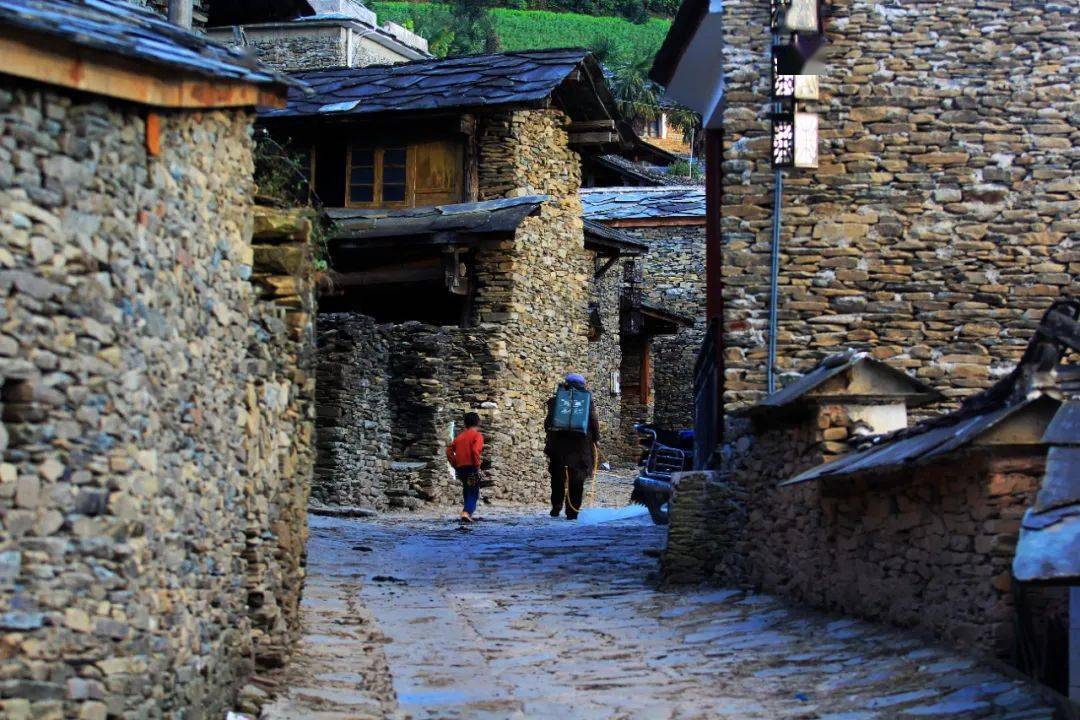
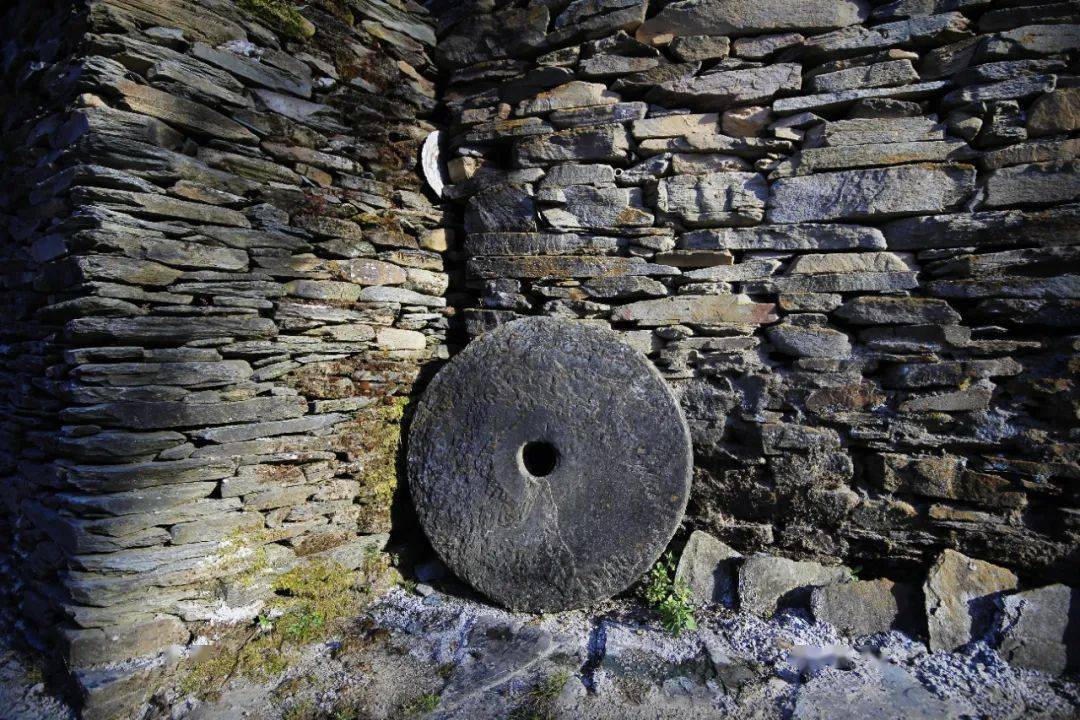
茶马古道上的塘房村/Tangfang Village on the Ancient Tea-Horse Road
Tangfang Village is one of the top ten characteristic villages in Fengqing County. The local party committee and government have conducted in-depth research multiple times and proposed an overall renovation plan. Firstly, they aim to preserve the architectural style of the village’s residential buildings, unify the appearance of residential buildings, and carry out partial renovations, highlighting the village’s distinctive use of “stone” as a feature. Secondly, they plan to rationalize the distribution of functions within courtyards, separate human and livestock areas, renovate toilets, and enhance courtyard greening. Thirdly, efforts will be made to strengthen the protection of the ancient road, restore damaged sections, and renovate access roads according to the characteristics of the ancient road. It is believed that in the near future, the gradually rising tourism interest will bring new income opportunities to the villagers here.

茶马古道上的塘房村/Tangfang Village on the Ancient Tea-Horse Road
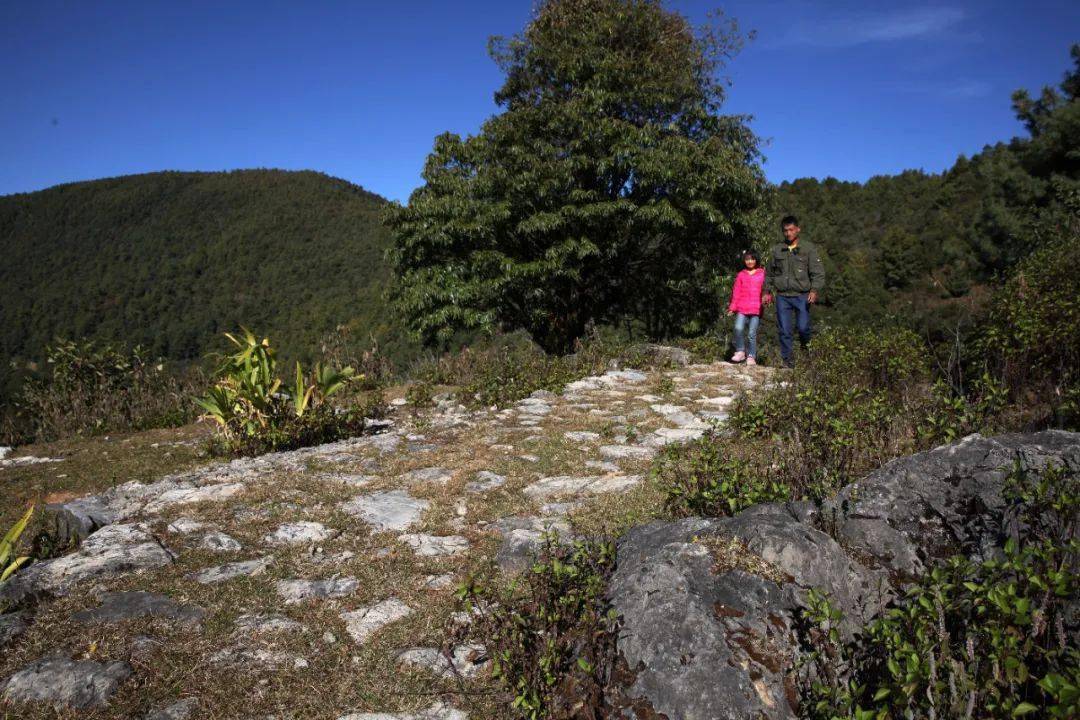
塘房保留完好的茶马古道/The well-preserved section of the ancient Tea Horse Road in Tangfang Village
04 Alusi (阿鲁司), the former name of Lushi(鲁史)
“鲁史”,originally named “阿鲁司” or “阿禄司,” originates from the Yi language, meaning “small town.” According to the “Shunning County Annals(《顺宁县志》),” since ancient times, Lu’shi has been a vital route from Shunning (Fengqing/The former name of Fengqing/顺宁) to Menghua (Weishan/蒙化, named 巍山 now), Xiaguan, and Kunming, serving as a crucial passage for the Tea Horse Ancient Road that traverses its territory from north to south. Starting from Lu’shi, the southern route leads to Jinma, Songlintang(松林塘), Qinglong Bridge(青龙桥), Xin Cun(新村), all the way to the county seat, and further south to Lincang, Simao(思茅/Named Puer today), Xishuangbanna, and extending to Southeast Asian countries. The northern route passes through Xiniu(犀牛渡), exits the county, proceeds through Weishan and Dali to the provincial capital, extends east to Lijiang and Tibet, and continues north to India and other countries.
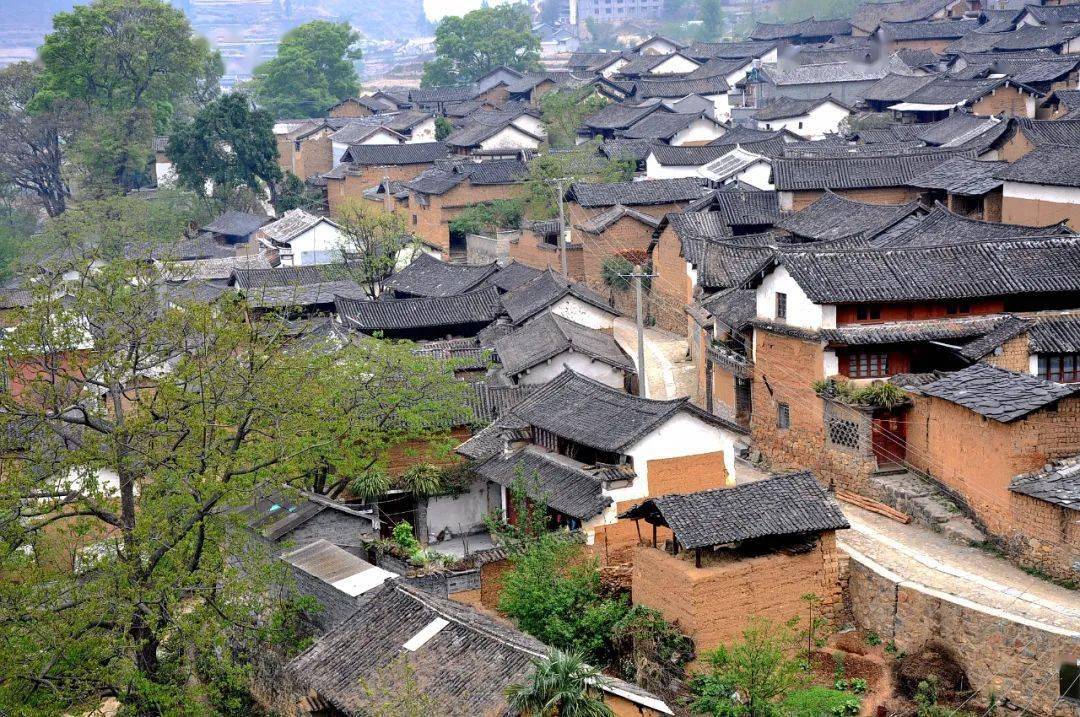
Lushi Old Town
It could be said that due to the formidable nature of the Lancang River, the advancement of Central Plains culture(中原文化) southward slowed down at Lu’shi, which ironically contributed to the development of Lu’shi(鲁史古镇). The ancient town of Lu’shi was established in the 26th year of the Ming Wanli era (1598/明万历), coinciding with the establishment of an inspectorate (巡检司) by the Ming Dynasty. This inspectorate, subordinate to Shunning Prefecture(顺宁府), served as the administrative authority for the northern region of the river(江北地区). With many passing merchants who had to rest and stay in Lu’shi, gradually a street scene formed. Lu’shi’s development eventually resulted in the basic layout of three streets, seven lanes, and one square(三街七巷一广场). In 1639, at the age of 54, Xu Xiake entered Fengqing from Xiqian(习谦) on the fifth day of the eighth lunar month and departed from Gaojiancao(高简槽) on the fifteenth day, arriving in Lu’shi in the afternoon. It is said that Xu Xiake stayed at the Ding family’s (丁家) residence, which has undergone several renovations and still exists today, but when inquiring about the owner, one can only provide a general answer based on historical records.

史古镇古老的楼梯街/The ancient stairway street of Lu’shi Town
Turning the pages of Xu Xiake’s “(徐霞客) Travel Diary in Yunnan《滇日游记》”, one reunites with Lu’shi in the year 1639. Despite Xu Xiake’s economical use of words, he dedicates a considerable length to recording his encounter with Lu’shi. “Three li ahead, we ascended a hill and saw a hundred households nestled against it, known as Alu’si(阿鲁司, The former name of Lushi). The land here bends westward, with the northern mountains curving southward, and a hill jutting out from the middle. Alu’si is situated atop this protrusion. To the west, distant mountains rise one after another, extending from north to south, including the ridges of Wansong and Tianjing, flanking the southern stretch of the Lancang River. To the north, the landscape is rugged and mountainous, with one peak standing out prominently. Inquiring with the locals, I learned it is called Mengbu Peak. Alongside it lies a temple, and that is where the main road passes through. I rested here, boiling water twice for a meal, awaiting the arrival of the camel caravan. As the afternoon progressed and no water or grass was to be found ahead, we stopped and lodged for the night. It happened to be the Mid-Autumn Festival, and I had brought along a round cake, purchased from Shunning, as a lunar viewing treat. However, the moon was obscured by clouds, and I ended up sleeping.” (“三里,蹑冈头,有百家倚冈而居,是为阿禄司。其地则西溪北转,南山东环,有冈中突而垂其北,司踞其突处。其西面遥山崇列,自北南纡,即万松、天井南下之脊,挟澜沧江而南者;其北面乱山杂沓,中有一峰特出,询之土人,即猛补者后山,其侧有寺,而大路之所从者。余识之,再瀹汤而饭,以待驼骑。下午乃至,以前无水草,遂止而宿。是夜为中秋,余先从顺宁买胡饼即烧饼一圆,怀之为看月具,而月为云掩,竟卧。”From Xu Xiake’s “(徐霞客) Travel Diary in Yunnan《滇日游记》)
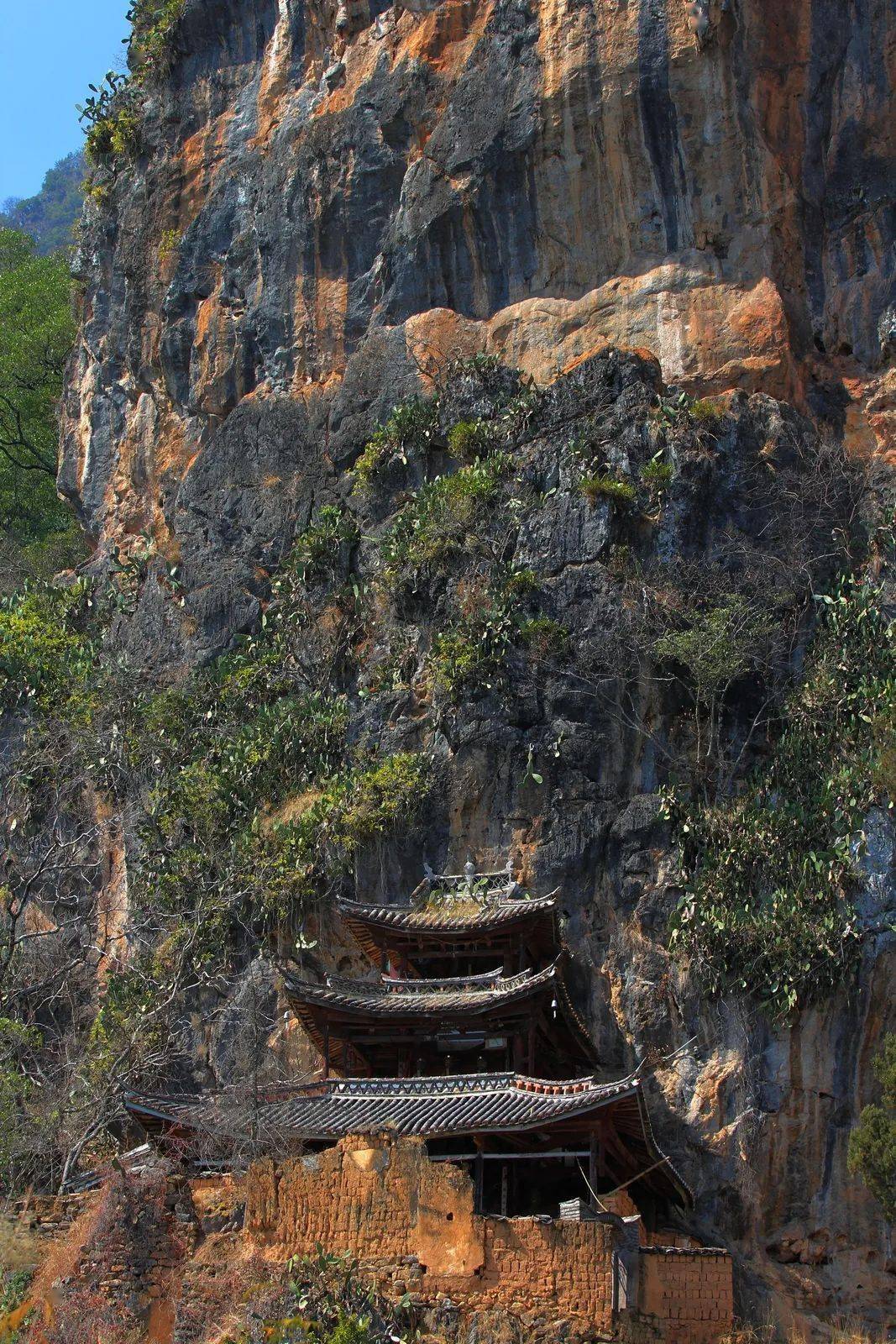
Chafang Temple (茶房寺) is located behind the “Shunxià Line(顺下线)” segment of the Ancient Tea Horse Road in Mengpuzhe(蜢璞者段).
With the completion of the Qinglong Bridge over the Lancang River, trade and travel flourished, attracting merchants from other regions to establish businesses in Lushi. Recognizing the opportunities here, establishments like the Sichuan-Guizhou Guild Hall((川黔会馆)), the Western Sichuan Guild Hall(西蜀会馆), and the Dianxi Guild Hall (滇西会馆) emerged. Businesses such as Hu Qingxiang Silk(胡庆祥绸缎), Hu Zechun General Store(胡泽春百货), Liu’s Restaurant(刘记餐馆), Zhao’s Gold Shop(赵记金行), and the Jun Chang Tea Company(俊昌号茶叶) thrived. Particularly noteworthy was the Jun Chang Tea Company, where the owner, Luo Yingcai(骆英才), engaged in both sales and production. The earliest tea plantation in Lushi was financed and developed by Luo Yingcai, which still exists today, although the old tea trees have been replaced due to the policy of Tea Cutting(“低改高”).
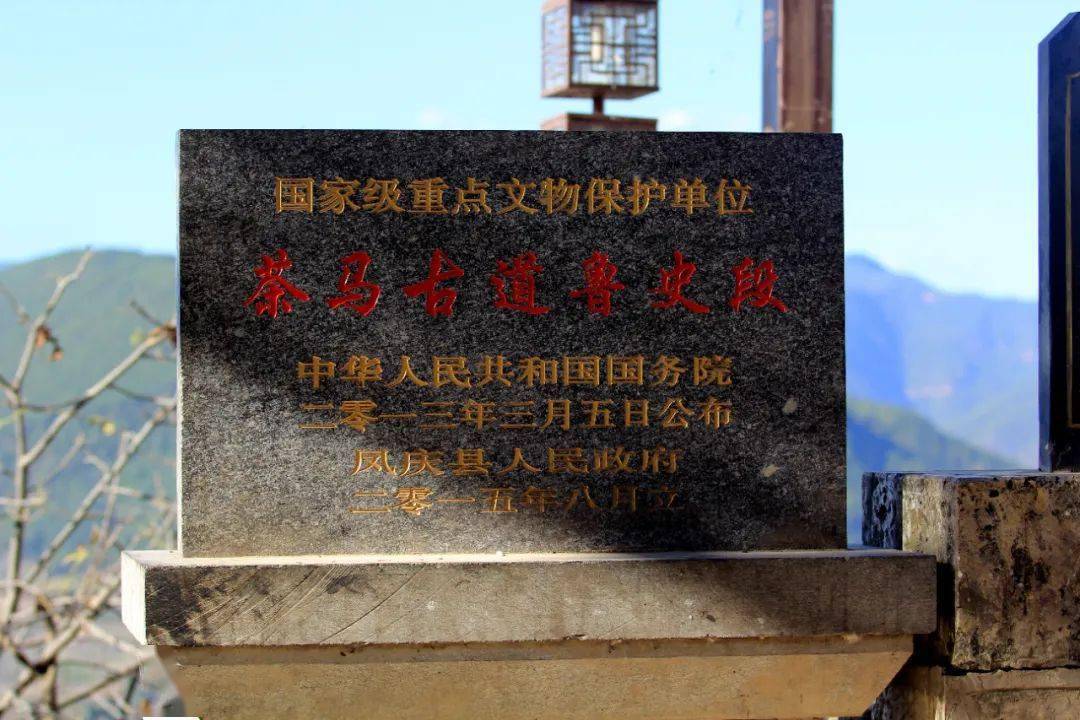
In Lushi, more people haven’t planted a single tea tree but have been engaged in tea production for a long time. It can be said that tea has sustained Lushi. Every spring when the tea is on the market, diligent people from Lushi venture deep into the tea mountains to pick fresh leaves, which they then take home to process. During those times, the tea leaves had to be hand-rolled on the same day they were harvested; leaves couldn’t be left overnight, making the tea-making process quite arduous. However, it is these tea-making families that have preserved a rich local tea culture. Even today, almost every household has a small clay pot for brewing tea. Whether it’s San Dao Tea or Bai Dou Tea, whether tea is used as medicine or for enjoyment, every family has its own tea recipe. Some families have taken their tea business directly to Xiaguan in Weishan County. As they expanded, a piece of tea leaf left Lushi and grew into an enterprise. However, many more people remain steadfast in the ancient town. They cherish the life surrounded by the aroma of tea, believing this is the life they should lead.
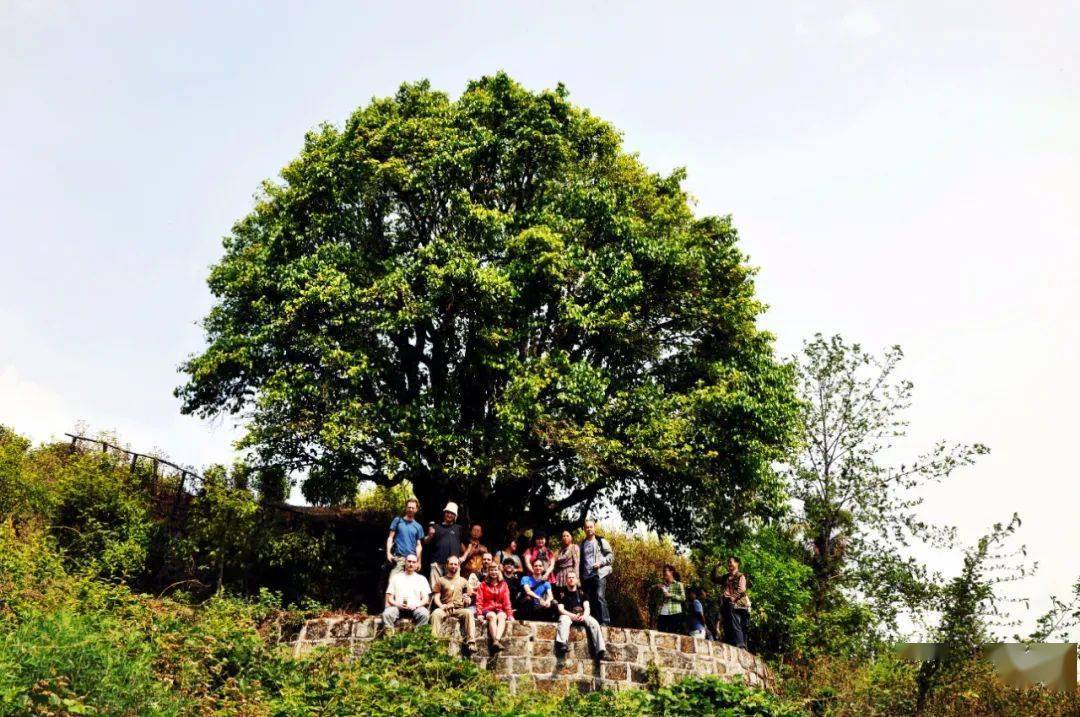
For more than 3,000 years, the ancient tea trees of Fengqing attract batches of foreign visitors every year.
With significant developments in commerce and handicrafts, Lushi has become a major town along the ancient Tea-Horse Road in western Yunnan. In the 1950s and 60s, Lushi boasted over 1,000 horses in its caravans and operated numerous horse shops equipped with veterinarians, establishing itself as a hub for local transportation. In the early 1970s, the road from Fengqing County to Lushi was paved, marking the gradual decline of this ancient road’s former glory. However, as a historic town on the Tea-Horse Road, Lushi continues to play a vital role in the development of tourism in Fengqing.
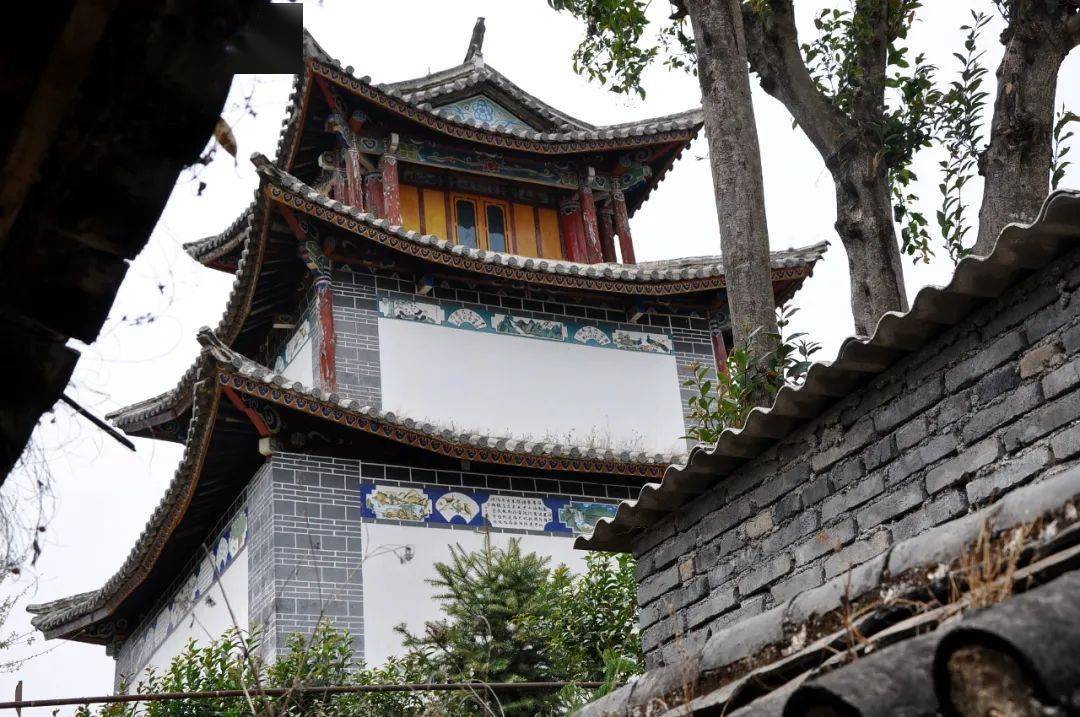
05
Xiniu Ferry, the Caravan Gone
The Black Hui River still flows, but the bustling caravans of Xiniu Ferry have vanished forever. The young girl who used to fetch water and take care of the blind old man finally married a kind-hearted caravan leader and now lives a happy life. As for Wang Shunjia, who engaged in robbery and murder, he was swept away in one night by the sudden rise of the river.
The story is told by an old man who lazily fans himself with a palm leaf fan, recounting it like a legendary tale. He sighed and said, “After Xiaowan Power Station was built to generate electricity, Xiniu Ferry disappeared completely. I had to move to a distant place, and I couldn’t help but feel a bit reluctant!”
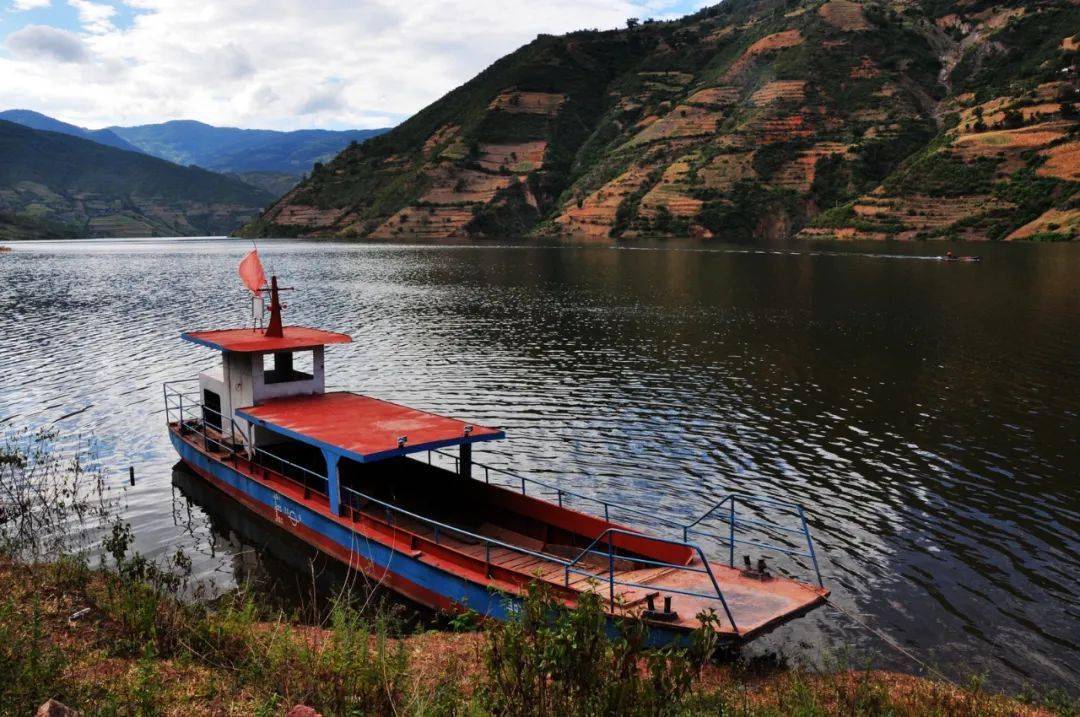
After the completion of Xiaowan Power Station, Xiniu Ancient Ferry still stands, but the prosperous scenery of the past is no longer found.
The backwater of the Xiaowan dam slowly rises, and the Wangan Building of Xiniu Ferry still stands on the hilltop, becoming a place for people to visit and rest. However, due to the rising water level, the powerful rush of the Black Hui River is no longer visible. The Wangan Building was once the schoolhouse of Xiniu Primary School, nurturing many students. Later, due to the rising river water, Xiniu Primary School relocated to a hillside farther from the river.
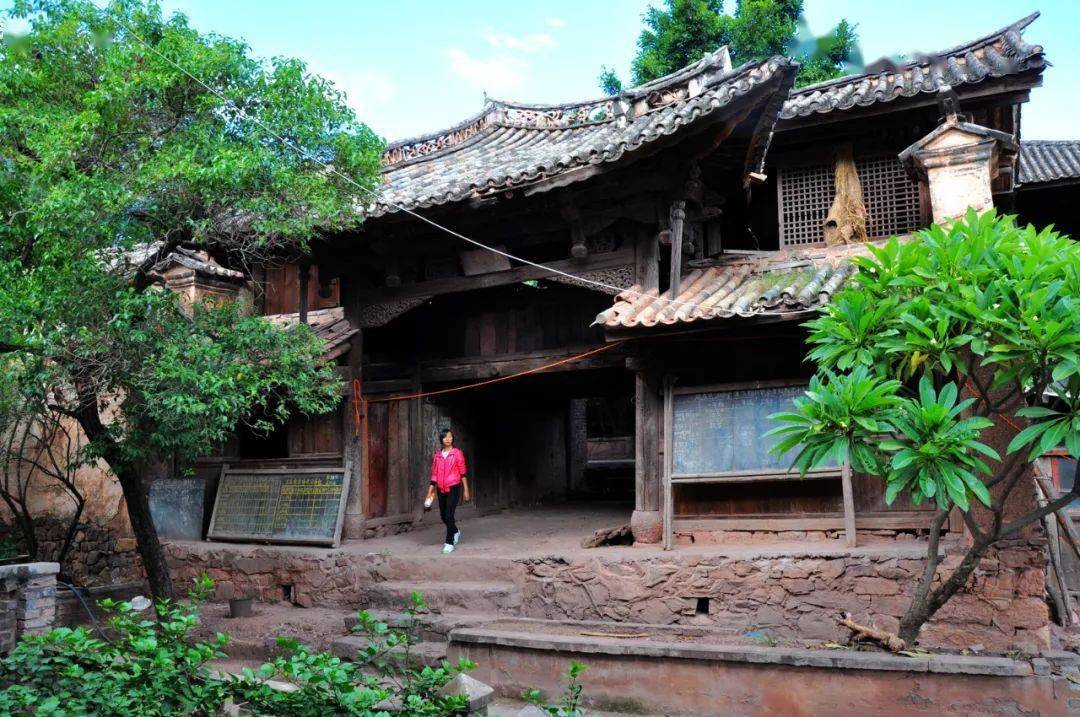
The Wangjiang Building(望江楼) of Xiniu Ancient Ferry
Xiniu Ferry is also a bustling market. According to local historical records, it was first established in the early Ming Dynasty. Almost as soon as the ferry was established, a street emerged, which extended all the way to the backwater of Xiaowan Power Station. Xiniu Street, less than 500 meters long, is crowded with traders from the three northern towns of Fengqing Jiangbei and patriotic towns in Weishan. Sellers say it’s easy to do business on this street, while buyers say the items sold on this street are of good quality. My hometown is more than 20 kilometers away from Xiniu Ferry. After graduating from high school, I learned to catch the first street is Xiniu Street.

After the XiaoWan Station was completed, the Rhino Office became deserted.
Xu Xiake originally intended to rest for a few days at the Rhino Ferry during his journey from Lushi to Xiniu, planning to visit the renowned Wang Shunjia(望顺江王). However, Wang Shunjia kept two fierce dogs, and he had a frequent need to urinate at night, which made Xu Xiake, a knowledgeable traveler, feel it was inconvenient to stay. At dusk, reluctantly, he had the boatman ferry him across the river. Upon arriving at the Tea Room Temple, Xu Xiake felt exhausted and unable to continue, so he decided to stay temporarily in the temple.
Standing on the corridor of the Tea Room Temple, Xu Xiake could see the splendid mansion of Wang Shunjia across the river. However, he must have felt regretful, just like when he was in Lushi, where the Mid-Autumn Festival moon was obscured by thick clouds, or when he drank Taihua tea(太华茶) at Gaojincuo(高枧槽) and forgot the name of his host.

The Rhino Ferry (犀牛渡口), located at the junction of Fengqing County and Weishan County, relies on this iron-clad boat to maintain transportation.
Historically, Rhino Ferry was a vital checkpoint on the Ancient Tea Horse Road. Today, it serves as a crucial conduit for economic exchanges and trade between Dali and Lincang. Locally, it remains a significant symbol of friendly exchanges between the people of these two regions. Every year, people spontaneously gather at the ferry crossing to pay respects, commemorating individuals and events with incense, each carrying stories that can never be fully told.
Source from: https://www.sohu.com/a/729640207_121123807

 7 Days GolfingTour
7 Days GolfingTour
 8 Days Group Tour
8 Days Group Tour
 8 Days Yunnan Tour
8 Days Yunnan Tour
 7 Days Shangri La Hiking
7 Days Shangri La Hiking
 11 Days Yunnan Tour
11 Days Yunnan Tour
 6 Days Yuanyang Terraces
6 Days Yuanyang Terraces
 11 Days Yunnan Tour
11 Days Yunnan Tour
 8 Days South Yunnan
8 Days South Yunnan
 7 Days Tea Tour
7 Days Tea Tour
 8 Days Muslim Tour
8 Days Muslim Tour
 12 Days Self-Driving
12 Days Self-Driving
 4 Days Haba Climbing
4 Days Haba Climbing
 Tiger Leaping Gorge
Tiger Leaping Gorge
 Stone Forest
Stone Forest
 Yunnan-Tibet
Yunnan-Tibet
 Hani Rice Terraces
Hani Rice Terraces
 Kunming
Kunming
 Lijiang
Lijiang
 Shangri-la
Shangri-la
 Dali
Dali
 XishuangBanna
XishuangBanna
 Honghe
Honghe
 Kunming
Kunming
 Lijiang
Lijiang
 Shangri-la
Shangri-la
 Yuanyang Rice Terraces
Yuanyang Rice Terraces
 Nujiang
Nujiang
 XishuangBanna
XishuangBanna
 Spring City Golf
Spring City Golf
 Snow Mountain Golf
Snow Mountain Golf
 Stone Mountain Golf
Stone Mountain Golf














